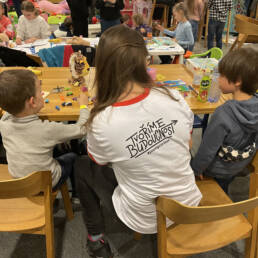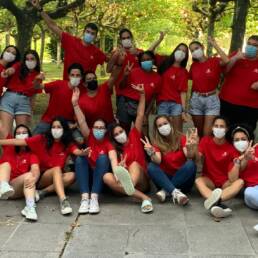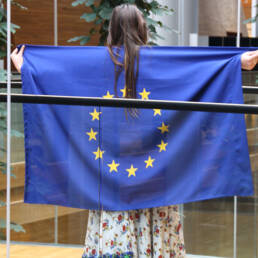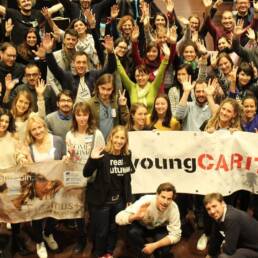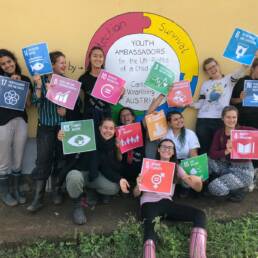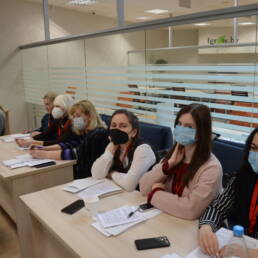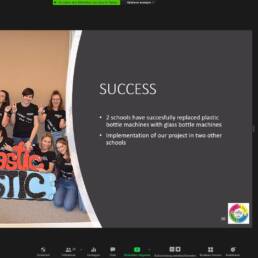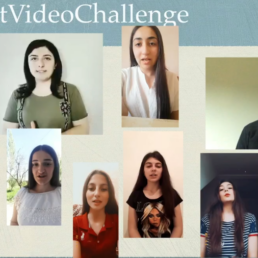Author
Alice uhl
Leader
YoungCaritas Vienna
The actionFactory of YoungCaritas is the home base for the actionPool, a pool of young volunteers. With the brainLabs, creative minds are united and challenged to share ideas, develop and actualise them together.
One of the aims of actionFactory is to provide inclusion to people with physical impairment in the fashion world. A young fashion designer Özlem Turan created the ‘Future Design’ collection, which addresses the needs of its target group, yet is not exclusively for physically disabled persons but for everyone.
Who is involved?
Many people are involved in this project. Many young volunteers have already joined Özlem Turan to support her with the sewing, and also Austrian fashion designer, Petar Petrov, who will contribute a piece to the collection and who helps with advice and contacts. A lot of young people with physical impairments have learned about the project, they support it by giving their expertise and will show the fashion pieces as runway models. The inclusion of blind and visually impaired people is also important to Özlem and her colleagues in this brainLab: all fabrics are provided with Braille letters moulded into the fabric and are made from Fairtrade fabrics.
Resources needed
The most important resources are: good ideas and active contributions from the young volunteers. The professionals of YoungCaritas support and help the brainLab-team with whatever help is needed: contacts or project management skills, support with fundraising and writing applications, or finding other young people to join the team. With the actionFactory YoungCaritas Vienna can provide a room for meetings, designing and sewing. The sewing machines where provided by Singer, a famous Austrian sewing-machine company. Financial support to buy the materials was given by the Ministry of Family Affairs, the Red Cross and Caritas Vienna.
Content description
Özlem Turan is a very dedicated young woman and volunteer at YoungCaritas Vienna. She studied fashion design and worked as a shop assistant in a fashion store. She noticed that fashion is always designed and produced for ‘normal’ (whatever that might be) bodies only. But what happens if someone lacks an arm or sits in a wheelchair? How do the demands on the garments change? Do people with disabilities not want to wear current, stylish and individualised fashion? She had the challenging idea of designing ‘barrier-free’ fashion for people with physical disabilities, the ‘inclusive’ fashion. She wanted to make sure that people with physical disabilities should not have to adapt, but rather that their environment and clothing should be adapted to them. After all, they already face enough obstacles in everyday life. Stress should not start in the morning when getting dressed. Everyone deserves to wear well-fitting and good-looking clothes, whether or not the body deviates from the norm.
Of course, the main focus was on the implementation of the designs. The plan was to have five pieces of clothing, including one evening wear item and a swimwear creation for men and women, as well as a casual unisex top that would go on sale in larger quantities as an advertising medium for the entire project.
The project is aimed at physically disabled people aged 16 to 35 years, of both sexes, so a unisex piece would also be designed and realised. This would be produced and sold in larger quantities. Important too is the approach: fashion should not be exclusive, according to Özlem Turan that would be the wrong way. Therefore, fashion is created with an inclusive approach: fashion to fit all, no matter if there is impairment or not.
As a designer, of course, you always want to create something new. But what is as important to me in this project is the social impact it is trying to achieve.
Özlem Turan, Head of the Project
Lessons learned
Özlem first had the idea for this project in 2014. After a concept phase, Özlem started the project with our support in 2015. In the first year, funds had to be found, project partners and the expertise of affected people sought. At this stage, the Ministry of Youth learned about the project, for which Özlem Turan and her project team even received an award. After the concept phase the first designs were created. Unfortunately, the search for the right materials and the right method to implement the Braille into/onto the fabrics turned out to be more challenging and expensive than expected. Özlem Turan’s team consisted of pupils and students. However, one of the biggest challenges was adapting a project that needs a lot of attention to the time resources and availability of the students. That’s why Özlem has had to pause the project. After completing her Master’s degree, she looks forward to continuing it.
Project snapshot
- Budget: €13,500 one off cost.
- People: 6 young volunteers + 2-3 YoungCaritas employees + 3 designers + disabled people as consultants.
- Time: 1 year.



